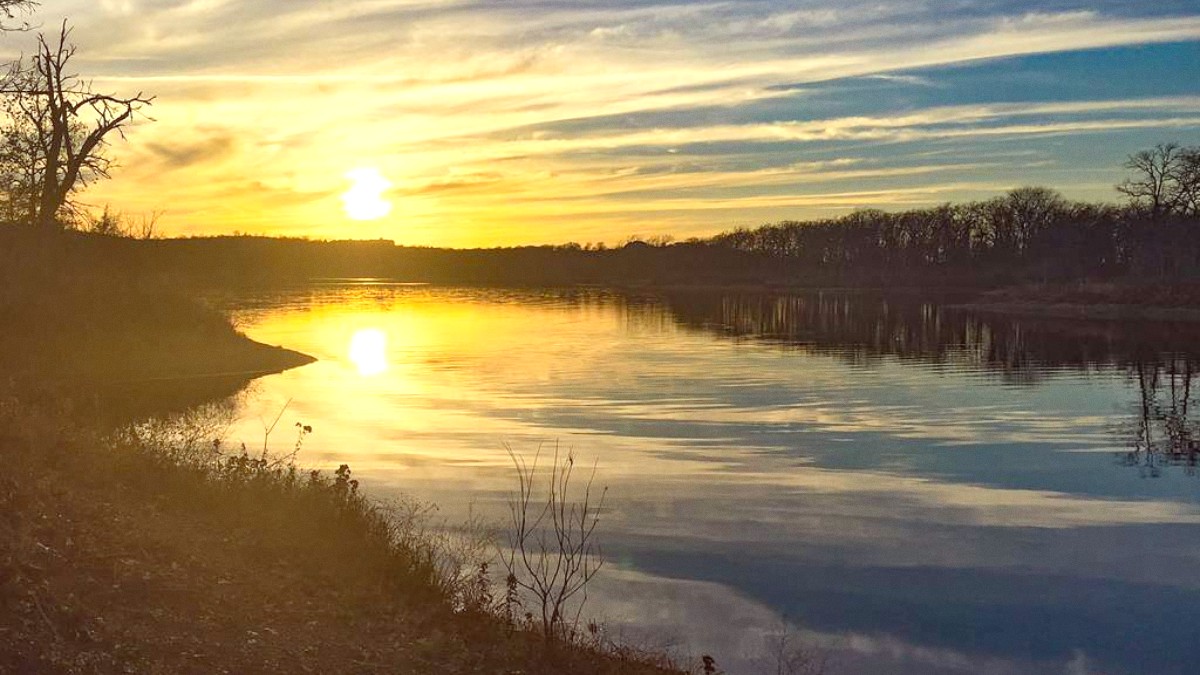
Oklahoma, USA
Chickasaw National Recreation Area sits within the Arbuckle Mountains, one of North America's oldest mountain ranges. These ancient hills, though modest in elevation, shape the park's unique geology and hydrology. The park is famous for its numerous freshwater and mineral springs, which emerge from the vast Arbuckle-Simpson Aquifer. This aquifer, a large underground reservoir, delivers water to the region. Travertine Creek, the park's centerpiece, showcases impressive travertine deposits formed by the mineral-rich spring water. The landscape transitions from dense woodlands along the creeks to open prairies and the expansive Lake of the Arbuckles. This lake, a large man-made reservoir, contrasts with the spring-fed creeks, presenting a different set of recreational opportunities. The park's location in south-central Oklahoma places it within a humid subtropical climate zone, leading to diverse plant and animal life across its varied terrains.
Picture a place where crystal-clear spring waters tumble over travertine rock formations, inviting you to cool off on a warm day. This is Chickasaw National Recreation Area, a cherished oasis in Oklahoma. It is a destination where the soothing sound of flowing water and the rustle of leaves create a peaceful soundtrack for your outdoor adventures. The park offers a direct connection to nature, whether you seek a tranquil swim, a challenging hike, or a quiet moment to observe wildlife. Its waters, historically valued for their perceived healing properties, continue to draw visitors seeking refreshment and renewal. This park delivers a genuine escape into Oklahoma’s distinct natural landscape.
The park’s merger with Lake of the Arbuckles and the Arbuckle Recreation Area in 1976 formed the larger Chickasaw National Recreation Area, expanding its boundaries and range of experiences while preserving the historic core.
Chickasaw National Recreation Area sits within the Arbuckle Mountains, one of North America's oldest mountain ranges. These ancient hills, though modest in elevation, shape the park's unique geology and hydrology.
The park is famous for its numerous freshwater and mineral springs, which emerge from the vast Arbuckle-Simpson Aquifer. This aquifer, a large underground reservoir, delivers water to the region. Travertine Creek, the park's centerpiece, showcases impressive travertine deposits formed by the mineral-rich spring water.
Dense woodlands line the creeks, providing shaded trails.
Expansive open areas offer different habitats and views.
A large man-made reservoir that contrasts with the spring-fed creeks, offering varied recreational opportunities.
The park's location in south-central Oklahoma leads to diverse plant and animal life.
A mix of geological features supports a wide array of flora and fauna.
The land protected as Chickasaw National Recreation Area holds deep historical roots. The springs were a meeting place and a source of well-being for various Native American tribes. In 1902, the area gained recognition as Sulphur Springs Reservation, set aside by the Chickasaw and Choctaw Nations, for public health and enjoyment. It became Platt National Park in 1906, marking it as the first national park in Oklahoma and the seventh in the United States.
During the Great Depression, the Civilian Conservation Corps (CCC) made a lasting impact on the park. CCC workers constructed many of the park’s enduring stone bridges, pavilions, and administrative buildings. Their rustic architecture blends seamlessly with the natural environment.
In 1976, Platt National Park merged with Lake of the Arbuckles and the Arbuckle Recreation Area to form the larger Chickasaw National Recreation Area. This merger expanded the park’s boundaries, presenting a wider range of natural and recreational experiences while preserving the historic core.
These ancient hills, though modest in elevation, shape the park's unique geology and hydrology, contributing to its diverse plant and animal life across varied terrains.
Chickasaw National Recreation Area presents a diverse range of experiences for every visitor. The park features clear, cool spring-fed creeks fitting for swimming and wading, specifically at popular spots like Little Niagara. Miles of trails wind through forests and open areas, suitable for hiking, walking, and cycling.
Lake of the Arbuckles offers expansive waters for boating, fishing, and additional swimming areas. Wildlife abounds, with opportunities to spot deer, various bird species, and even a bison herd. Historic structures built by the Civilian Conservation Corps add a touch of timeless charm. The Travertine Nature Center has educational exhibits and ranger programs. This park is a destination for outdoor enthusiasts, families, and anyone seeking a peaceful connection with nature. It combines refreshing waters, ancient geology, and a rich cultural past into a single, accessible natural retreat.
Clear, cool waters perfect for swimming and wading, with popular spots like Little Niagara.
Miles of trails through forests and open areas, fitting for hiking, walking, and cycling.
Expansive Lake of the Arbuckles with opportunities for boating, fishing, and swimming.
Wildlife viewing opportunities abound, including deer, various bird species, and a bison herd. The park's Civilian Conservation Corps (CCC) structures add rustic charm.
Enjoy clear spring-fed creeks and the expansive Lake of the Arbuckles for swimming, wading, and boating.
Explore miles of trails ideal for hiking, walking, and cycling through diverse landscapes.
Discover ancient geology, historic Civilian Conservation Corps structures, and a past tied to Native American tribes.
One of North America's oldest mountain ranges, shaping the park's geology.
Vast underground reservoir feeding the park's famous freshwater and mineral springs.
Centerpiece of the park, known for impressive travertine deposits and cool waters.